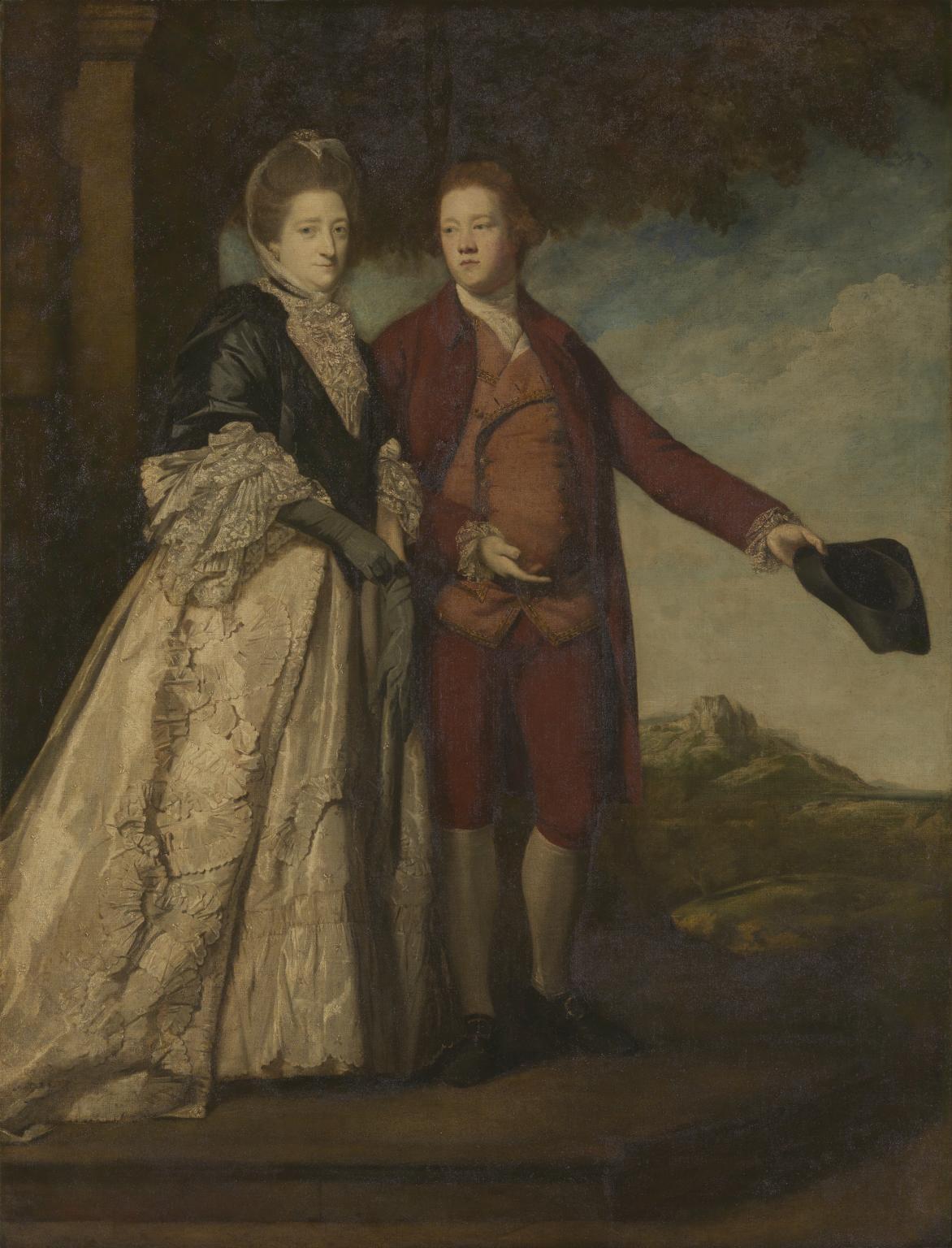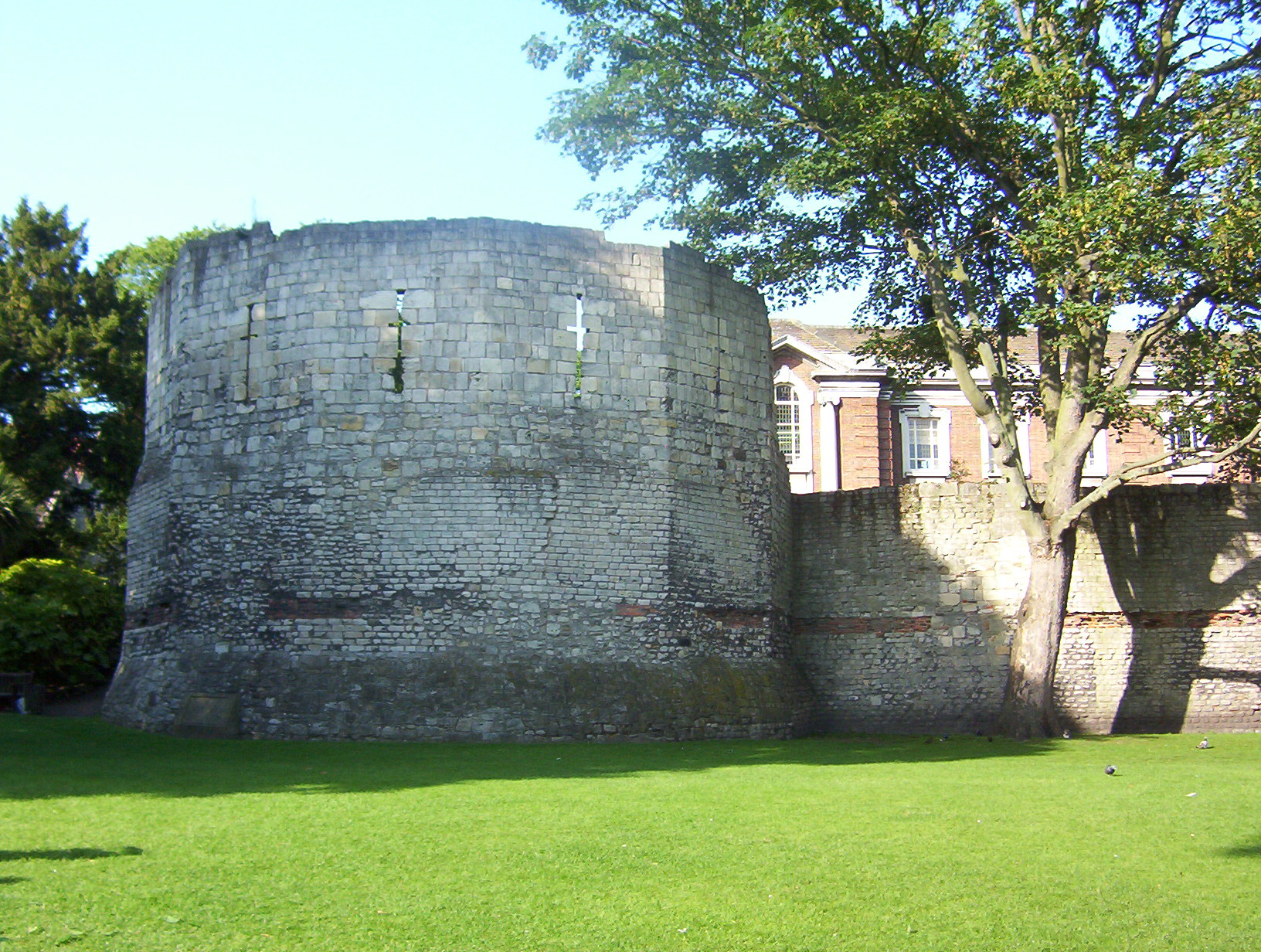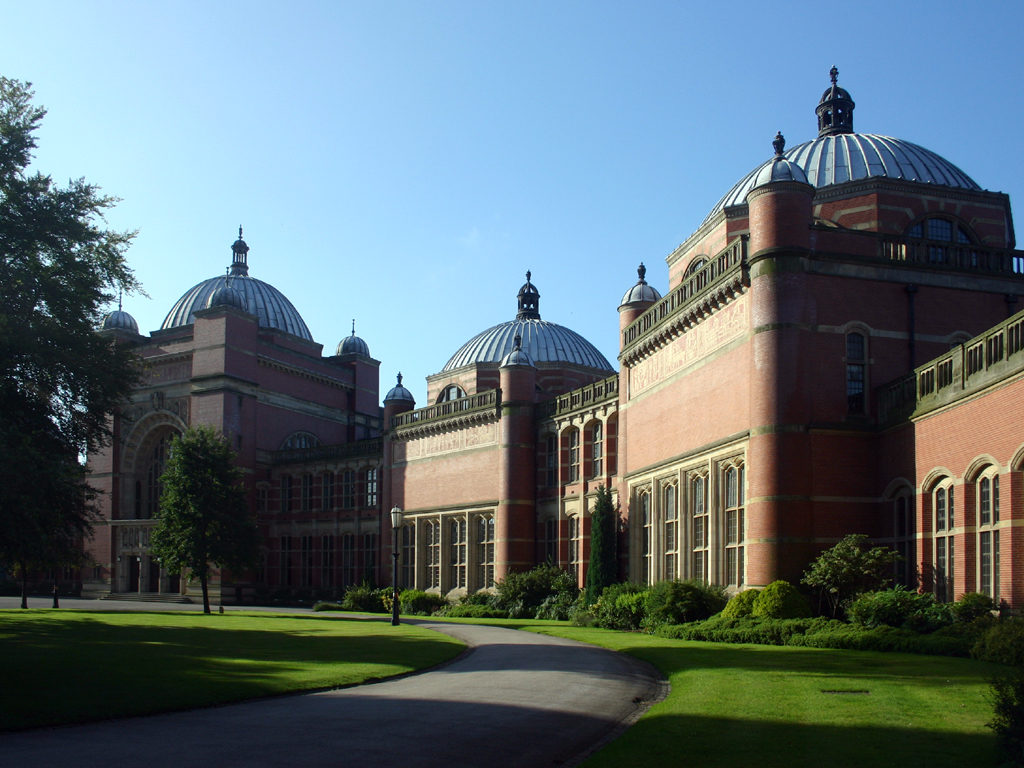|
Feasegate
Feasegate is a street in the city centre of York, in England. History The street lies over the south corner tower of the walls of Roman Eboracum. The street was in existence by the Jorvik period, from which period there are substantial deposits, including evidence of craft working. The name of the street comes from the Old Norse word for " cow house", and the street itself was first recorded in 1256. William Etty was born at the now-demolished 20 Feasegate in 1787. None of the current buildings on the street date to earlier than the 18th century. The street forms part of the city's central shopping area. However, by 2018, it had only one stand-alone shop, with other properties being empty, or in use for food businesses. Layout and architecture The street runs south from St Sampson's Square to Market Street. Notable buildings on the west side include 1 Feasegate, built in 1770 by Robert Woodhouse; 5 and 7 Feasegate, designed by W. Brown in 1885, and with what Nikolaus Pe ... [...More Info...] [...Related Items...] OR: [Wikipedia] [Google] [Baidu] |
St Sampson's Square
St Sampson's Square is an open space, and former marketplace, in the city centre of York, England. History In the 12th-century, the area now occupied by the square was known as Arkilltofts, possibly named after Arnketil, a leading figure in the city around the time of the Norman Conquest. It was a large open space, occupying the south-eastern corner of the former Roman fortress. By 1130, it was owned by the royal larderer. At this time, he held responsibility for the sale of meat in the city, and a market gradually developed in the area. Initially, the site occupied around 10,000 square yards, although this has been reduced over time, as buildings encroached on the space, forming a square. By about 1250, the square was named Thursday Market, suggesting that, at the time, it hosted a market just one day a week. By the 14th-century, it was known in particular as a place to buy meat, although in the following century, only traders from outside the city could sell in the sq ... [...More Info...] [...Related Items...] OR: [Wikipedia] [Google] [Baidu] |
Market Street (York)
Market Street is a road in the city centre of York, in England. History The line of the street is immediately outside the Roman walls of Eboracum. It is first recorded in the 12th-century, as Bretgate, believed to mean "Street of the Britons". It was later known as Jubbergate. In the 1760s, the Little Theatre existed on the street, while in 1796, a Congregationalist chapel was constructed on it, becoming a Unitarian chapel in 1816. In 1836, Parliament Street was constructed, cutting across the middle of Jubbergate, and entailing the demolition of the chapel. The longer, south-western section of the road was widened in 1852, and then renamed "Market Street". The street now forms part of the city's central shopping area, although it has been described as "secondary in terms of retail outlets". Layout and architecture The street runs north-east, from its junction with Coney Street and Spurriergate, to Parliament Street. Beyond Parliament Street, its short continuation ... [...More Info...] [...Related Items...] OR: [Wikipedia] [Google] [Baidu] |
Eboracum
Eboracum () was a fort and later a city in the Roman province of Britannia. In its prime it was the largest town in northern Britain and a provincial capital. The site remained occupied after the decline of the Western Roman Empire and ultimately developed into the present-day city York, occupying the same site in North Yorkshire, England. Two Roman emperors died in Eboracum: Septimius Severus in 211 AD, and Constantius Chlorus in 306 AD. Etymology The first known recorded mention of Eboracum by name is dated , and is an address containing the genitive form of the settlement's name, ''Eburaci'', on a wooden stylus tablet from the Roman fortress of Vindolanda in what is now the modern Northumberland. During the Roman period, the name was written both ''Eboracum'' and ''Eburacum'' (in nominative form). The name ''Eboracum'' comes from the Common Brittonic ''*Eburākon'', which means "Taxus baccata, yew tree place". The word for "yew" was ''*ebura'' in Proto-Celtic (cf ... [...More Info...] [...Related Items...] OR: [Wikipedia] [Google] [Baidu] |
William Etty
William Etty (10 March 1787 – 13 November 1849) was an English artist best known for his history paintings containing nude figures. He was the first significant British painter of nudes and still lifes. Born in York, he left school at the age of 12 to become an apprentice printer in Hull. He completed his apprenticeship seven years later and moved to London, where in 1807 he joined the Royal Academy Schools. There he studied under Thomas Lawrence and trained by copying works by other artists. Etty earned respect at the Royal Academy of Arts for his ability to paint realistic flesh tones, but had little commercial or critical success in his first few years in London. Etty's ''Cleopatra's Arrival in Cilicia'', painted in 1821, featured numerous nudes and was exhibited to great acclaim. Its success prompted several further depictions of historical scenes with nudes. All but one of the works he exhibited at the Royal Academy in the 1820s contained at least one nude ... [...More Info...] [...Related Items...] OR: [Wikipedia] [Google] [Baidu] |
York
York is a cathedral city with Roman Britain, Roman origins, sited at the confluence of the rivers River Ouse, Yorkshire, Ouse and River Foss, Foss in North Yorkshire, England. It is the historic county town of Yorkshire. The city has many historic buildings and other structures, such as a York Minster, minster, York Castle, castle, and York city walls, city walls. It is the largest settlement and the administrative centre of the wider City of York district. The city was founded under the name of Eboracum in 71 AD. It then became the capital of the Roman province of Britannia Inferior, and later of the kingdoms of Deira, Northumbria, and Jórvík, Scandinavian York. In the Middle Ages, it became the Province of York, northern England ecclesiastical province's centre, and grew as a wool-trading centre. In the 19th century, it became a major railway network hub and confectionery manufacturing centre. During the Second World War, part of the Baedeker Blitz bombed the city; it ... [...More Info...] [...Related Items...] OR: [Wikipedia] [Google] [Baidu] |
Jorvik
Scandinavian York ( non, Jórvík) Viking Yorkshire or Norwegian York is a term used by historians for the south of Northumbria (modern-day Yorkshire) during the period of the late 9th century and first half of the 10th century, when it was dominated by Norse warrior-kings; in particular, it is used to refer to York, the city controlled by these kings. Norse monarchs controlled varying amounts of Northumbria from 875 to 954; however, the area was invaded and conquered for short periods by Anglo-Saxons between 927 and 954 before eventually being annexed by them in 954. It was closely associated with the much longer-lived Kingdom of Dublin throughout this period. History York had been founded as the Roman legionary fortress of ''Eboracum'' and revived as the Anglo-Saxon trading port of ''Eoforwic''. It was first captured in November 866 by Ivar the Boneless, leading a large army of Danish Vikings, called the "Great Heathen Army" by Anglo-Saxon chroniclers, which had lande ... [...More Info...] [...Related Items...] OR: [Wikipedia] [Google] [Baidu] |
Old Norse
Old Norse, Old Nordic, or Old Scandinavian, is a stage of development of North Germanic languages, North Germanic dialects before their final divergence into separate Nordic languages. Old Norse was spoken by inhabitants of Scandinavia and their Viking expansion, overseas settlements and chronologically coincides with the Viking Age, the Christianization of Scandinavia and the consolidation of Scandinavian kingdoms from about the 7th to the 15th centuries. The Proto-Norse language developed into Old Norse by the 8th century, and Old Norse began to develop into the modern North Germanic languages in the mid-to-late 14th century, ending the language phase known as Old Norse. These dates, however, are not absolute, since written Old Norse is found well into the 15th century. Old Norse was divided into three dialects: Old West Norse, ''Old West Norse'' or ''Old West Nordic'' (often referred to as ''Old Norse''), Old East Norse, ''Old East Norse'' or ''Old East Nordic'', and ''Ol ... [...More Info...] [...Related Items...] OR: [Wikipedia] [Google] [Baidu] |
Cow House
A barn is an agricultural building usually on farms and used for various purposes. In North America, a barn refers to structures that house livestock, including cattle and horses, as well as equipment and fodder, and often grain.Allen G. Noble, ''Traditional Buildings: A Global Survey of Structural Forms and Cultural Functions'' (New York: Tauris, 2007), 30. As a result, the term barn is often qualified e.g. tobacco barn, dairy barn, cow house, sheep barn, potato barn. In the British Isles, the term barn is restricted mainly to storage structures for unthreshed cereals and fodder, the terms byre or shippon being applied to cow shelters, whereas horses are kept in buildings known as stables. In mainland Europe, however, barns were often part of integrated structures known as byre-dwellings (or housebarns in US literature). In addition, barns may be used for equipment storage, as a covered workplace, and for activities such as threshing. Etymology The word ''barn'' comes f ... [...More Info...] [...Related Items...] OR: [Wikipedia] [Google] [Baidu] |
5 And 7 Feasegate
5 (five) is a number, numeral and digit. It is the natural number, and cardinal number, following 4 and preceding 6, and is a prime number. It has attained significance throughout history in part because typical humans have five digits on each hand. In mathematics 5 is the third smallest prime number, and the second super-prime. It is the first safe prime, the first good prime, the first balanced prime, and the first of three known Wilson primes. Five is the second Fermat prime and the third Mersenne prime exponent, as well as the third Catalan number, and the third Sophie Germain prime. Notably, 5 is equal to the sum of the ''only'' consecutive primes, 2 + 3, and is the only number that is part of more than one pair of twin primes, ( 3, 5) and (5, 7). It is also a sexy prime with the fifth prime number and first prime repunit, 11. Five is the third factorial prime, an alternating factorial, and an Eisenstein prime with no imaginary part and real part of the form 3 ... [...More Info...] [...Related Items...] OR: [Wikipedia] [Google] [Baidu] |
Nikolaus Pevsner
Sir Nikolaus Bernhard Leon Pevsner (30 January 1902 – 18 August 1983) was a German-British art historian and architectural historian best known for his monumental 46-volume series of county-by-county guides, '' The Buildings of England'' (1951–74). Life Nikolaus Pevsner was born in Leipzig, Saxony, the son of Anna and her husband Hugo Pevsner, a Russian-Jewish fur merchant. He attended St. Thomas School, Leipzig, and went on to study at several universities, Munich, Berlin, and Frankfurt am Main, before being awarded a doctorate by Leipzig in 1924 for a thesis on the Baroque architecture of Leipzig. In 1923, he married Carola ("Lola") Kurlbaum, the daughter of distinguished Leipzig lawyer Alfred Kurlbaum. He worked as an assistant keeper at the Dresden Gallery between 1924 and 1928. He converted from Judaism to Lutheranism early in his life. During this period he became interested in establishing the supremacy of German modernist architecture after becoming aware of ... [...More Info...] [...Related Items...] OR: [Wikipedia] [Google] [Baidu] |







